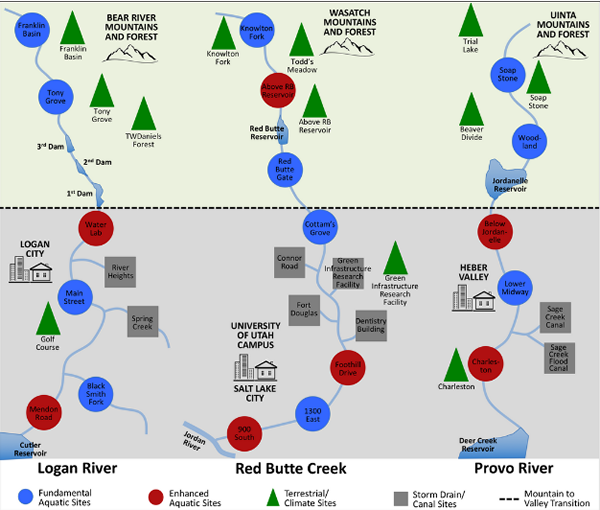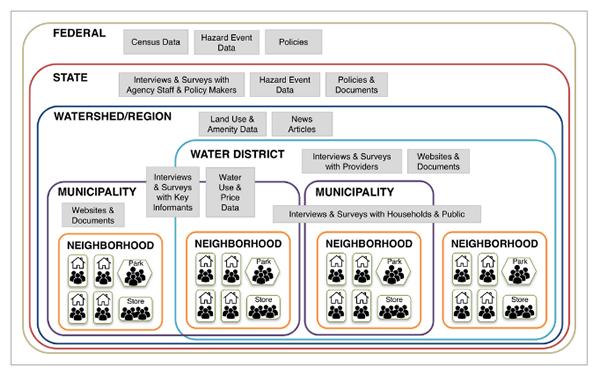News Article
September 15, 2017
Publication Features Two Papers on iUTAH Water Science
As the iUTAH project comes to a close, researchers are summarizing methodology and findings as it applies to other water-related research. The September issue of the Journal of the American Water Resources Association (JAWRA) features two in-depth reviews of the mountain urban water system in Utah, specifically, iUTAH design, implementation, and maintenance of sensor equipment, data and metadata produced by the water science project.
The first paper, “Designing and Implementing a Network for Sensing Water Quality and Hydrology across Mountain to Urban Transitions” discusses the logistics of developing and maintaining the Gradients Along Mountain to Urban Transitions (GAMUT) network. The article described the practices followed, as well as insights and findings during the installation and operation of GAMUT. Early on, the research team focused on openly publishing data to drive further science. The research teams “worked to balance scientific needs with physical site limitations, communication constraints, public engagement goals, site security, and partnership potential.” Once the groundwork was laid for the project, additional enhancements focused on quality assurance and system controls to manage and communicate the numerous large datasets produced. The paper finds that GAMUT the "is underlying infrastructure that serves as a vehicle for other research endeavors, ” and instills confidence in consistent long-term data output which secondary users might find helpful after applying their own assessments.
The second paper, “Data Management Dimensions of Social Water Science: The iUTAH Experience” focuses more specifically on integrating a social science framework into the project. It reinforces the first article’s discussion of planning and policy needs, as it explores the open science, data sharing, and the human aspect of Utah’s water system. The study recommends classifying social water science data according to the dimensions of human subject data, primary vs. secondary data, and data restrictions to reveal opportunities and reduce barriers for data sharing. Furthermore, the article concludes by saying that “by facilitating innovative approaches to managing a diverse portfolio of data, the iUTAH program has furthered understanding of a mountain urban water system and provided opportunities for data integration across water sciences and between science and society.”
Full study of each article available below:
Designing and Implementing a Network for Sensing Water Quality and Hydrology across Mountain to Urban Transitions
Authors: Amber Spackman Jones, Zachary T. Aanderud, Jeffery S. Horsburgh, David P. Eiriksson, Dylan Dastrup, Christopher Cox, Scott B. Jones, David R. Bowling, Jonathan Carlisle, Gregory T. Carling, and Michelle A. Baker
Data Management Dimensions of Social Water Science: The iUTAH Experience
Authors: Courtney G. Flint, Amber Spackman Jones, and Jeffery S. Horsburgh


« Back to list of all news articles


